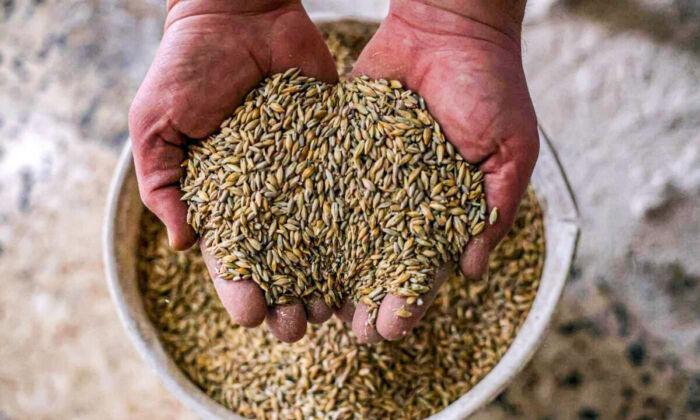After more than two years of consistent supply chain disruptions from the pandemic, countries are now seeing inflated food prices and are bracing for potential shortages resulting from the compounded effect of Russia’s war in Ukraine.
The war between Russia and Ukraine complicates existing supply chain recovery efforts after lengthy COVID-19 related lockdowns and transportation interruptions that began in 2020.
Collectively, the two Eurasian countries are powerhouse producers of essential commodities such as wheat; nearly a third of the world’s wheat supply comes from Russia and Ukraine.
As of March 24, the grain commodity price rose 26 percent in a month and traded at more than $10.70 per bushel.
In the consumer world, the economic pinch on wheat manifests as a lack of items such as pasta, bread, cereal, and fried foods.
However, some Latin American countries are ideally positioned to step in to help address the shortages. Argentina is one of the world’s top producers of wheat, soy, and meat.
On March 19, Argentina’s minister of agriculture, livestock, and fisheries, Julian Dominguez, said the country is expecting a record wheat harvest this season.
“We have also decided, in order to capture international prices, to open export records for the ‘22–’23 harvest, for a total of 8 million tons of wheat, in addition to the 2 million tons already authorized,” he said.

He said the ultimate objective is to give agricultural producers predictability for sowing wheat and achieving a new production record of 25 million tons.
“The world crisis affects us, but it also puts before us the challenge of reinforcing our commitment to global food security, producing more, and in a more sustainable way,” Dominguez said.
Within the region, Brazil, Chile, Paraguay, Uruguay, and Peru are also major wheat exporters.
Some countries stand to suffer worse food scarcity and higher prices than others.
While the United States is unlikely to see any significant shortages, price inflation is already underway.
Meanwhile, import-dependent European countries and less economically developed nations will take a harder hit and are more likely to face the prospect of empty shelves in stores. This is especially problematic where the situation is already dire.
Scarcity-affected regions include the majority of African countries, the Middle East, parts of Latin America, and several Southeast Asian nations.
“The United States won’t have shortages but will see higher prices,” commodities analyst David Tonyan told The Epoch Times.
Other factors exacerbating the problem include increased transportation costs along with the inability of fertilizer suppliers to meet global demands, and subsequent higher prices.

However, these variables were prevalent before Russia launched its attack on Ukraine on Feb. 24.
For Tonyan, the cost and scarcity of fertilizer present a significant challenge to global food security.
“The main concern to me, globally, is in fertilizer ... not all sanctions, driven as one of the main issues, is lost exports out of Ukrainian ports. Though buyers are avoiding products from the region, [which] is going to drive food shortages in developing countries.
“United States is relatively well-positioned here with its own robust fertilizer supply chain, though prices will still be high as long as the conflict goes on.”
Global fertilizer prices were already on the rise last year. Strong demand from key crop-growing regions drove the inflated costs, which were aggravated by tighter commodity supplies, according to the World Bank.

Curtis R. Youngs, the associate director of livestock and animal health programs at the Center for Sustainable Rural Livelihoods, told The Epoch Times that strengthening links in the food supply chain is essential in the mitigation efforts.
“Of course, technology to increase the efficiency of production of traditional raw food sources, [such as] crops, fish, animal-source foods, as well as to engineer novel food sources, can significantly contribute to society’s quest to attain global food security,” he said.
Youngs added that strategic adjustments in crop production can go a long way in negating shortages.
He gave the example of increasing the production of edible foods by reducing the production of “potential food sources” intended for non-edible uses, like growing canola for human consumption instead of for industrial lubricants.
Moreover, stability in global transportation costs, particularly in relation to crude oil prices, will play a major part in food commodity inflation in the near future, according to some experts.





